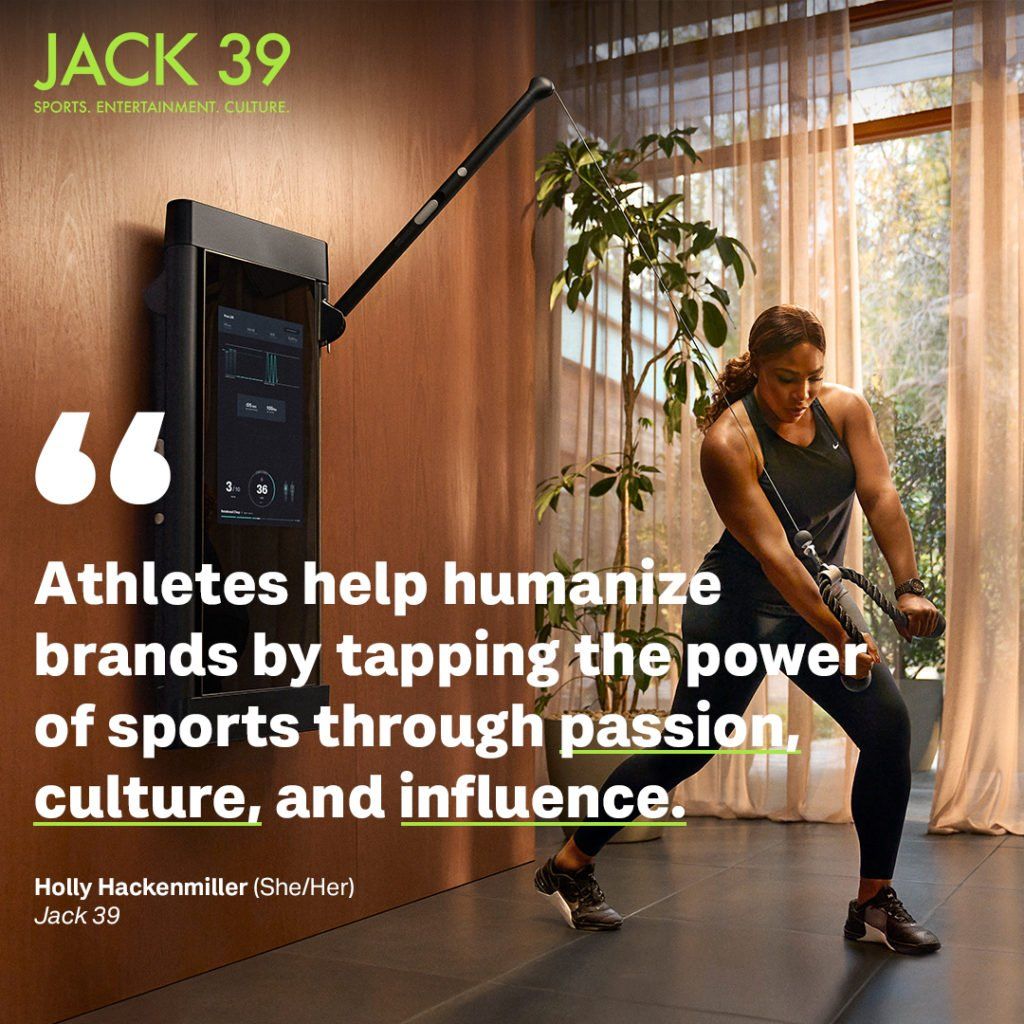Jack 39 Blog
February 7th, 2023 By Holly Hackenmiller
 Today’s brand marketers are up against many guidelines when partnering with athletes. The rules are exhaustive. Each league and category are different, and it takes specialized knowledge and experience to know what is and isn’t allowed. Brands need experts to navigate this landscape and push the boundaries of strategic brand partnerships – specifically, athlete partnerships.
Today’s brand marketers are up against many guidelines when partnering with athletes. The rules are exhaustive. Each league and category are different, and it takes specialized knowledge and experience to know what is and isn’t allowed. Brands need experts to navigate this landscape and push the boundaries of strategic brand partnerships – specifically, athlete partnerships.
Partnerships between brands and athletes can be tricky and restrictive. Sometimes, there’s room for interpretation and it’s up to brands to maneuver the space safely and effectively so the brand and the athlete can win. Sure, the creative idea must be clever, and distribution channels need to be clearly defined, but the real win happens when you’re an expert on the rulebook, helping to ensure all partners are comfortable bringing impactful concepts to life.
Athletes help humanize brands by tapping the power of sports through passion, culture, and influence. Choosing to work with athletes unlocks a world of iconic major events (e.g., that big end of season American football game coming up next week, international sports festival that’s held every four years, tennis opens, etc.) and the fans who live and breathe the sports ecosystem. However, it’s not just about who is the best in the league at that time or what sport is the CEO’s favorite. Choosing to work with athletes is an art and a science. There’s an athlete and an evaluation at every stage of the funnel – that means, strategizing who, when, and where the best partners fit – all while using data and analytics to help prove ROI. But how? Here are four unwritten rules to stick to when choosing to work with athletes.
Know the rules around the athlete, rights holder, assets, contracts, and more.
Know the rules and regulations under each rights holder and category is vital. Some are stricter than others (i.e., alcohol and the NFL), and understanding the dos and don’ts is a crucial step in making any athlete partnership successful. Specifics of the rules are not shared widely, and they change frequently, so the right people must be involved at each step to keep campaigns on track or to pivot. Without an understanding, programs and sponsorship elements could hold legal issues that put brands and/or athletes’ careers at risk (e.g., fines or even suspensions). This also applies to social media, where brands’ and athletes’ dos and don’ts come into play alongside FTC guidelines.
Build trust with stakeholders and athletes.
In this industry, we all know relationships are key. Whether with brands, properties, athlete representation, or even the athlete directly, solid relationships are a crucial part of creating a lasting partnership. Take pride in trusted relationships and build them across the board, which ultimately will play a key role in getting the job done – and getting it done right. With athletes, it’s most valuable to build this level of trust as it enables one to understand the ins and outs of the athlete, making the work much more impactful for brands. Knowing the ins and outs helps create a partnership that will land best with an athlete and the brand’s community. Additionally, it allows for a better understanding of when and how to present a potentially risky or rule-skirting idea so that athletes and their teams won’t immediately say “no”. Being at the center of every conversation gives an advantage to creating trusting, meaningful connections with brands and athletes, giving an upper leg to negotiating, building, and managing the most impactful campaign for all parties involved.
Vet athletes, inside and out.
Deciding whether someone is a brand fit can be difficult. It’s crucial to vet athletes to ensure options strategically enhance the brand. Taking this a step further, it’s important to back vetting with insights from in-depth relationships and third-party tools that help expedite the process and give details that aren’t publicly available (i.e., audience demographics). Understand the athlete and brand’s passion points and create sweet spots between them, which create authentic and impactful partnerships on both ends.
Timing is everything.
Understanding contract terms around timing is essential, as brands and athletes must legally abide by them. Though vital, it’s not the only restriction when working with athletes. They often have rigorous schedules on and off the season and are typically in “blackout periods” throughout. Some athletes are more lenient than others, but “blackout periods” normally indicate a time when their focus is entirely on the game. That means no production days, appearances, promotions, social acts, etc., and no use of NIL in certain scenarios. Constant communication with athletes helps to find availability easily, and when/where there may be some flexibility with schedules. In addition, it’s a way to bring new opportunities as schedules are constantly changing quickly.
Sponsorships between brands and athletes can feel challenging with all the rules in play. Yet those same challenges allow experts to offer creative solutions and ways to best optimize ROI. Especially when marketers want to tackle an iconic major event, it’s best when brands have impartial data and third-party resources to advocate on behalf of them – all while consistently measuring and creating strong athlete partnerships that prove goals and objectives. With a roster of the right players and a successful playbook, it’s the only way to score the touchdown your team needs to win the game. The game of partnerships, that is.